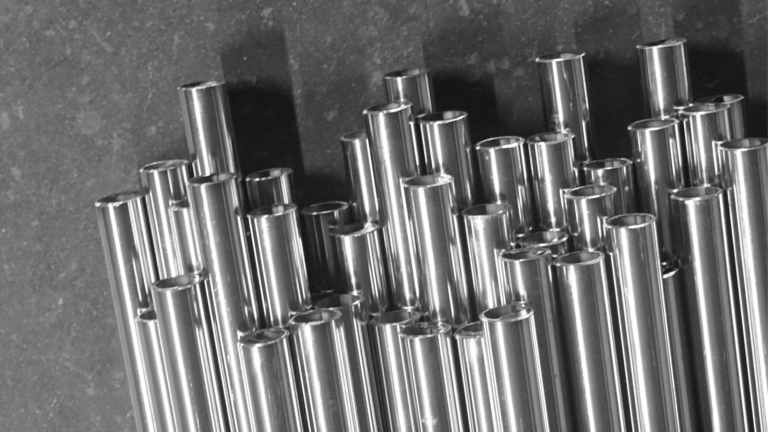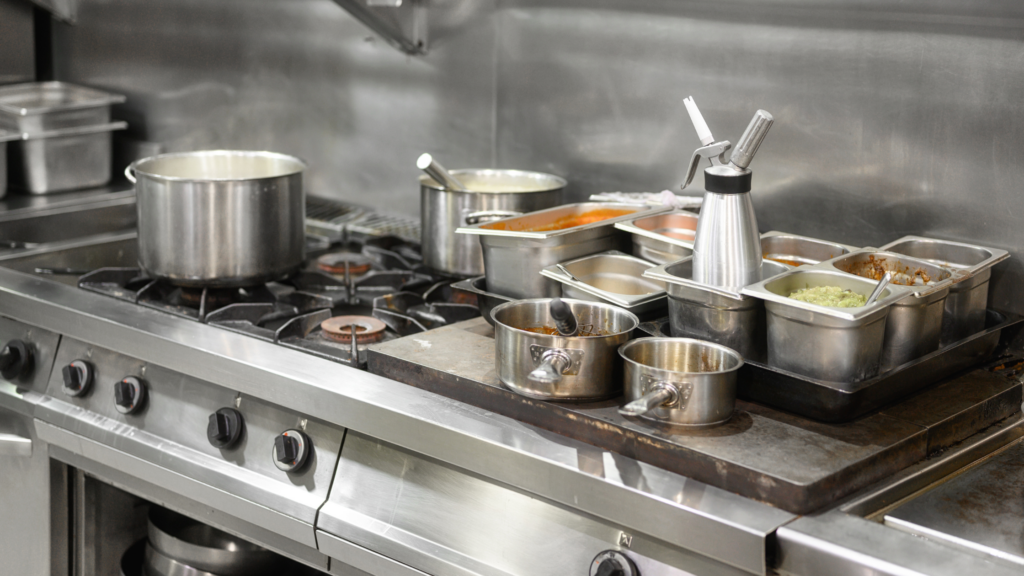Stainless steel is an important building material in industries across the world. If you’re already confident that stainless steel is proper type of steel for your project, the next step is to understand how stainless steel grades can differ and what unique qualities they can offer for different projects.
Today, the steel experts at Pennsylvania Steel Company, which offers products such as tool steel, sheet steel, and plate steel, are breaking down two of their most popular grades, 300 series stainless steel and 400 series stainless steel. Keep reading to learn what makes them different and which you should choose for your project.
What are Stainless Steel Grades?
Stainless steel, at its basic level, is an alloy of chromium and iron. In addition to these metals, stainless steel may also include elements like:
- Carbon
- Nickel
- Manganese
- Nitrogen
- Sulfur
- Copper
Stainless steel grades are determined by which elements they contain and the percentage of each present. Based on this, the alloy can take on different properties that make it suited for various applications.
The Society of Automotive Engineers (SAE) developed the three-digit grading system for stainless steel to reflect the elements present. 300 series and 400 series contain varying compositions reflected by the last two digits in the grade.
Other organizations, like the American Society for Testing and Materials (ASTM), have their own numbering systems to categorize stainless steel. But this article will focus on the three-digit classification for simplicity.
While over 150 stainless steel grades are available on the market, Pennsylvania Steel Company specializes in 300 series and 400 series stainless steel.
Although all stainless steel offers high durability and resistance to rust and corrosion, there are some critical differences between the 300 series and 400 series that you should remember when choosing which is suitable for your project.
What is 300 Series Stainless Steel?
300 series stainless steel, also called SS 300, is the most popular stainless steel grade on the market. Due to its nickel content, SS 300 is non-magnetic and highly corrosion-resistant – even more so than other stainless steel grades. It also has high heat resistance, making it ideal for use in industries like:
- Automotive production
- Aerospace engineering
- Construction
- Machinery
While 300 series stainless steel is not heat-treatable like other grades, its high versatility makes it an excellent choice for projects that need to withstand long stretches of use in corrosive environments.
What is 400 Series Stainless Steel?
400 series stainless steel, or 400 SS, is made with little to no nickel content compared to its 300 series counterpart. While this makes it susceptible to rust under certain conditions, it also gives it superior toughness and resistance to damage from wear and abrasions.
Because of its robustness and high durability, 400 SS finds much of its use in:
- Tools
- Kitchens and culinary services
- Agriculture
- Furnaces
While it lacks the top-shelf rust resistance of the 300 series, 400 series stainless steel is both heat-treatable and magnetic, making it ideal for manufacturing objects that experience daily use and manipulation.
300 vs 400 Series Stainless Steel
Now that we’ve looked at what makes them unique, let’s review how 300 series and 400 series stainless steel grades compare side-by-side.
Composition
300 series contains nickel, making it more resistant to corrosion. 400 series has a higher carbon content, which makes it more resilient but more prone to rust.
Strength
300 series is more ductile than the 400 series and has less resistance to surface wear and tear. This makes the 300 series more suitable for sensitive applications like surgical instruments or machinery, whereas the 400 series’ hardness makes it ideal for hand tools or agricultural use.
Price Point
The 300 series is not heat-treatable, so it can be more expensive to manufacture. Due to this, the 400 series can be a more cost-effective option when there is a lower risk of exposure to corrosive elements.
Frequently Asked Questions
How do I determine the exact percentage of each element in a specific grade of stainless steel, and how does this influence the material’s properties?
To determine the exact percentage of each element in a specific grade of stainless steel, it’s essential to refer to the standards set by organizations like the Society of Automotive Engineers (SAE) or the American Society for Testing and Materials (ASTM). These organizations provide detailed specifications for each stainless steel grade, including the composition and percentage of elements.
The specific makeup of a stainless steel alloy influences its properties significantly. For instance, higher nickel content in the 300 series enhances corrosion resistance and ductility, making it suitable for environments where these properties are crucial. On the other hand, a higher carbon content in the 400 series increases hardness and strength, making it ideal for tools and applications where wear resistance is important. Understanding the composition of a stainless steel grade can help you select the right material for your project, ensuring it meets the desired durability, corrosion resistance, and mechanical properties.
Are there any environmental considerations or benefits in choosing one series over the other for a project?
When considering the environmental impact of choosing between the 300 and 400-series stainless steel for a project, several factors come into play. The material’s production process, recyclability, and longevity all contribute to its environmental footprint. Stainless steel, in general, is highly recyclable, which reduces its long-term environmental impact. However, the nickel content in the 300 series, while enhancing corrosion resistance and making it more suitable for harsh environments, also involves more complex and potentially environmentally intensive mining and processing compared to the materials used in the 400 series. On the other hand, the durability and corrosion resistance of the 300 series may lead to longer product life, potentially reducing the need for replacement and, consequently, the environmental impact associated with production and disposal. Ultimately, the choice between the two series should consider the specific application’s environmental conditions and the material’s lifecycle impact.
How does the magnetism of the 400 series stainless steel affect its use in certain applications compared to the non-magnetic 300 series?
The magnetism of the 400 series stainless steel, attributed to its composition, makes it ideal for applications requiring magnetic responsiveness, such as in motors, generators, and electrical appliances. Conversely, the non-magnetic 300 series is preferred in settings where magnetic interference must be avoided, like in medical equipment used during MRI procedures or in certain electronic devices to prevent circuitry interference. The choice between the two series often hinges on the specific application’s need for or against magnetic properties, influencing their suitability across various industries.
Let Pennsylvania Steel Company Build with You!
Pennsylvania Steel Company has been a trusted provider of stainless steel products for over 50 years. Our company is dedicated to providing total care and attention to each customer’s needs, and we offer next-day service in most of our locations.
If you’re ready to begin your next project, request a quote online or call one of our distributors in Pennsylvania; Bethpage, NY; Naugatuck, CT; Cleveland, OH; Stanley, NC; or Ashland, VA for more information about our wide variety of 300 series and 400 series stainless steel products!





